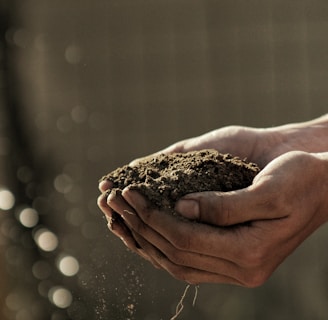
Organic Gardening Practices: A Guide to Growing Naturally
The 5 Basic Principles of Organic Gardening
BEGINNER GUIDESORGANIC GARDENING
Principles of Organic Gardening
In a world increasingly concerned with environmental sustainability and healthy living, organic gardening stands out as a practical way to make a positive impact right in your own backyard. By avoiding synthetic chemicals and working with nature rather than against it, organic gardeners create thriving ecosystems that produce nutritious food while protecting the environment.


2. Use Organic Seeds and Plants
Using certified organic seeds and plants ensures your garden starts chemical-free from day one.
When selecting seeds, look for reputable suppliers that specialize in organic varieties. These seeds haven't been treated with synthetic fungicides or pesticides, and they're bred to thrive without chemical interventions. Many heritage and heirloom varieties perform exceptionally well in organic systems because they've been selected over generations for natural resilience.


3. Encourage Pollinators
Pollinators aren't just beneficial visitors—they're essential partners in an organic garden. Without them, many plants can't produce fruits or seeds.
Create pollinator habitat by:
- Planting native flowering plants that bloom throughout the growing season
- Providing shallow water sources with landing spots (like stones in a bird bath)
- Building or purchasing bee houses for solitary bees
- Avoiding any pesticides, even organic ones, during flowering periods
The relationship between pollinators and organic gardens is mutually beneficial: you provide habitat, they provide essential pollination services and increased biodiversity.


4. Use Natural Mulches
Mulching is perhaps the most time-saving practice in organic gardening. A good layer of organic mulch suppresses weeds, conserves moisture, moderates soil temperature, and gradually breaks down to feed the soil.
Different gardens benefit from different mulch materials:
- Vegetable gardens thrive with straw or shredded leaves
- Perennial beds benefit from wood chips or bark
- Acid-loving plants appreciate pine needles
Apply mulch 2-3 inches thick, keeping it slightly away from plant stems to prevent rot. Replenish it as needed, knowing that as it breaks down, it's adding valuable organic matter to your soil


5. Practice Crop Rotation
Rotate crops annually, even in small raised beds to interrupt pest cycles and optimize soil nutrition. A simple rotation might follow:
1. Legumes (beans, peas) to fix nitrogen
2. Heavy feeders (tomatoes, corn) to use that nitrogen
3. Light feeders (root vegetables, herbs)
4. Soil builders (cover crops) to reset the system
Even in small gardens, rotating plant families will reduce pest problems and improve harvests over time.


Organic gardening means working with natural systems rather than controlling them. These five practices help build a garden that grows more fertile and resilient each season. Whether you have acres or just containers on a balcony, these principles can be scaled to fit any situation, offering the rewards of nutritious food and the satisfaction of growing in harmony with nature.
1. Build Healthy Soil
In organic gardening, healthy soil is everything. Rather than viewing soil as simply a medium to hold plants, organic gardeners recognize it as a living ecosystem teeming with beneficial microorganisms.
Begin by testing your soil to reveal pH levels and nutrient content. You can pick up cheap ph testers on-line or try the vinegar/baking soda tests.
Based on these results, amend your soil naturally:
- Add compost to improve structure and microbial activity
- Use bone meal for phosphorus
- Apply rock phosphate for slow-release nutrients
- Incorporate kelp meal for trace minerals and growth stimulants
Cover cropping during off-seasons prevents erosion while adding organic matter. Leguminous cover crops like clover naturally fix nitrogen, reducing the need for additional fertilizers.


